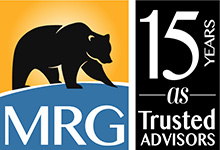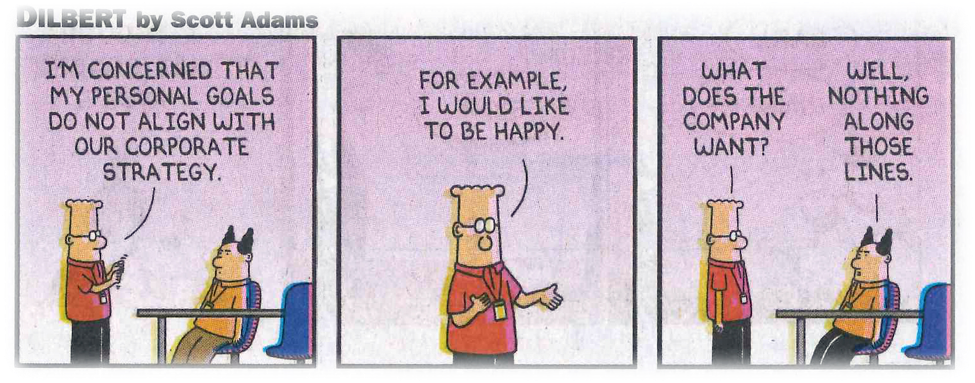Manage For Performance?
Managing for performance is developing specific behaviors as a manager that are designed to increase job performance. These behaviors must be tied to the organization’s mission, vision and values. You also must tailor performance management strategies to individual needs – feedback is essential to success!
Managing For Performance is a process, not an event.
What are we trying to accomplish?
- As managers and leaders, it is our duty to provide staff with the tools necessary to succeed.
- Primarily, that means coaching and mentoring.
- It also means having clear expectations and a method by which to measure performance.
- Staff should know at all times exactly where they stand.
The first 3 rules for success are:
1. Take care of our customers
Provide excellent customer service at all times
Go above and beyond whenever possible
2. Take care of each other – our team
Share successes with your team.
Get to know what your employees are passionate about!
3. Loyalty – to the organization, the department and to you personally
Encourage employees to be respectful of the organization, what your department is trying to achieve and ask for loyalty to you in exchange for supporting their careers and providing honest feedback.
Key Steps
Must have a clear mission, vision, and values (Sacramento as an example)
- Mission – The mission of the City of Sacramento is to protect, preserve, and enhance the quality of life for present and future generations.
- Vision – Be the best managed City in California
- Values – (STAR) Service, Teamwork, Accountability, and Respect
Setting expectations must start with the hiring process…
Then again at orientation, followed by monthly feedback, quarterly and annual reviews.
Evaluation and Feedback
- Every team knows who the superstars are – ask under performers why they think those folks are superstars
- Evaluations are not done just on desk tasks but on the ability to know, understand and perform, based on our value system (culture)
Feedback Principles
- Specific to behavior, As soon as you can, Informal and daily, Solution-focused
- Describe the impact of an employee’s actions on themselves, the team and the organization. Remember their missteps affect not only them but the entire organization
- Remember, the lack of feedback in the easiest management faux pas to fix
- Try to catch employees doing things right – the more positive feedback the better
- Everyone should get positive feedback every week-brag on one person weekly
Star Performers/Dead Wood
Stars
- Typically 10% are star performers
- They typically get the least attention – make sure you touch bass enough.
Dead Wood
- Typically 10% are dead wood
- Don’t spend much time on them – it reinforces to them and to the workforce that their bad behavior is rewarded with your energy!
Retention Discussions
Statistics tell you – the #1 reason people leave is because they don’t like their manager
Hold quarterly Retention Discussions with Your Star Performers
- The purpose is to tell them what makes them a star. Find out what they like and don’t like.
- This should be a positive feedback conversation – ask what they would change.
Your goal is to KEEP them!

Communication Basics
- Assure them they will never hear anything you haven’t said to their face – LIVE IT
- Tell them you expect the same in return
- They don’t have to like you, but they do have to meet your expectations
- Be sure they understand your role as manager/mentor
- It’s about the WORK!
Generation Gaps
Baby boomers vs Generation X and Y
- Ask people what they want and what motivates them!
- Communicate differently once you understand them
Motivating
- We cannot motivate people – Motivation comes from within
- We CAN create an environment where people feel motivated
- Ask employees how/what that environment looks like for them
The Team
- Employees need to be taught to think as a team and not as an individual.
Circumstances That Affect Performance
- They don’t know what they are to do
- Prioritizing – what is late?
- What does it look like (e.g. 8AM is when you greet the customer not when you park)
- Every desk must have a job description
- Every desk function must have a workflow – THIS IS A MUST
- Ask them to tell you the steps they will use to accomplish their task(s)
- They think YOUR way won’t work
- Don’t immediately discount this
- Doesn’t mean that they are right but you must listen
- They think THEIR way is better
- Innovation is hard for people
- It has become about THEM instead of the WORK
- Sometimes you just have to tell them “it’s for the good of the organization”
- They do not have the ‘big picture’ like we do
- There is no positive consequence for them to do it
- Rewarded behavior is repeated behavior
- They THINK they ARE doing it
- If this is the case then they aren’t getting the needed feedback
- Without feedback they won’t ‘get it’ and is very frustrating to all
- Sometimes we are wrong about the cause of a performance issue-don’t think you automatically know
- They are rewarded for NOT doing it
- 80% of our employees are watching us to see how we deal with dead wood
- If dead wood not corrected then the 80% will move in that direction
- How do you tell – Do I have a training problem or a motivation problem?
- If a person could do the job if their career depended on it then you have a motivation problem
- They are punished for doing what they should
- E.g. – star performers get more work and are recognized less – we forget about them
- They anticipate a negative consequence for doing it
- Assure a safety net to try new things
- There is no negative consequence for a poor performer
- Consequence is the only thing that changes behavior
- Obstacles beyond their control
- Lack of resources, conflicting instructions
- Manager’s job is to rid employees of obstacles
Performance Appraisal Process
- Set the expectations
- Conduct annual planning sessions
- Conduct midyear reviews
- Conduct the performance appraisal
NOTE: Where most managers fall short is with the follow up (monitor goal progress regularly and provide any needed assistance)
Successful Performance Appraisal Must-Haves
- Set expectations (objectives, job description, task priorities, workflow). Explain how they will be evaluated. Show what success looks like. Appraisals are a tool. Agree on feedback guidelines. Be sure they understand your role – coach for success, provide feedback and support. No surprises in performance appraisals.
- What does it mean to coach? Give direct observations to them. Have an agenda and be prepared. Stay focused on their performance behavior. If they don’t see it as a problem they won’t change. Get agreement on the improvement plan. DOCUMENT!
- Annual Planning Sessions. Review employees performance appraisal form. ALWAYS go back to your mission, goals, and values. Spend a lot of time on the values. Discuss next year’s goals.
- Verbal feedback is a must but written documentation is imperative as it justifies the score they are given. Documentation needs to show their accomplishments and needed areas of improvement – balance. Informal feedback is critical and should be as routine, non-threatening, and behavior-specific as possible.
Coaching Model
Three parts to coaching (like a traffic circle)
1. Clarify – give direct observations to them and they to you. Do not become emotional. State your role (coach). You are in control of the session. Stay focused on their performance/behavior. This is a fact finding step. Now you have quantifiable data.
2. Develop your plan together. Explore solutions, options and next steps. Ask questions and share ideas. Challenge assumptions by asking questions. This is a dialog. If they don’t see it as a problem they won’t change it. This is where you get them to agree to the plan. You cannot close the conversation until you have agreement. Decide who needs to do what and by when. Provide encouragement. Always go back to your mission, vision and values.
3. Close. Be sure all follow-up dates have been set (taking action, reviewing process, continuing the coaching conversation, etc.) Summarize the agreement and followup actions. BE VERY CLEAR. Document – goes into employee’s coaching file. Should include positive and negative events, date/time, situation, individuals present, summarized conversation and comments.
What Employees Want From Performance Reviews
- How am I doing/where can I improve
- Do I have a chance for advancement
- What is expected before my NEXT review
- How will I be evaluated
- What kind of assistance can I expect
- What department changes might be likely and how will they affect me

Common Errors in Rating Performance
- Contrast Effect: rating someone against others, instead of the performance criteria
- First Impression/Latest Behavior Effect: forming an early positive/negative judgment and/or rating of someone based on their recent behaviors.
- Halo/Horn Effect: generalizing behavior as all positive/negative
- Just-Like-Me Effect: rating someone more favorably because they are similar to the rater
- Spill-Over Effect: allowing past appraisals to influence the current one
CELEBRATE OFTEN!


